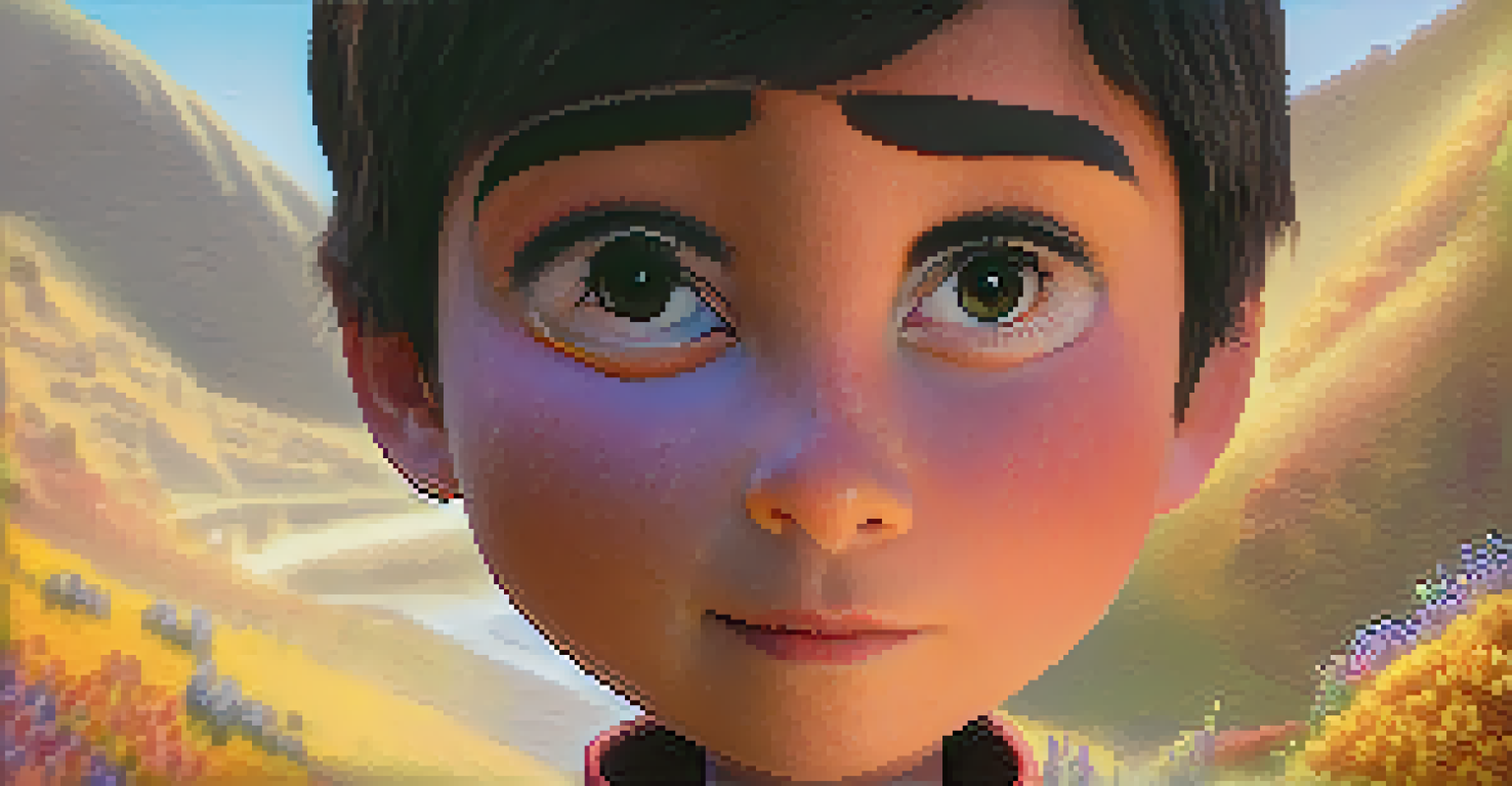Music in Animation: Enhancing Storytelling Through Sound

The Role of Music in Animation: Setting the Tone
Music serves as a powerful tool in animation, establishing the mood and tone of a scene. Imagine watching a heartwarming moment without a gentle melody; it just wouldn't feel the same. The right score can evoke laughter, tears, or suspense, guiding the audience's emotional response.
Music can change the world because it can change people.
Consider iconic animated films like Disney's 'The Lion King,' where the soundtrack not only complements the visuals but amplifies the emotional experience. Each song and score adds depth to the characters' journeys, making the audience feel more connected. Without music, these moments might fall flat.
In essence, music in animation acts like a character itself, influencing the viewer's perception and engagement. It sets the stage for what’s about to happen, making it an essential element of storytelling.
Creating Character Identity Through Musical Themes
One of the most fascinating aspects of music in animation is how it helps define character identities through unique musical themes. Just think of how you can instantly recognize Darth Vader’s theme in 'Star Wars'—it tells you so much about his character without uttering a word. This technique is prevalent in animated films as well.

For instance, in 'Frozen,' Elsa's powerful anthem 'Let It Go' perfectly encapsulates her journey of self-discovery and empowerment. The music not only enhances her character but also becomes synonymous with her struggle. Such themes make characters memorable and relatable.
Music Shapes Emotion in Animation
Music serves as a powerful tool in animation, establishing the mood and tone of scenes and enhancing emotional connections.
These musical motifs help audiences connect emotionally with the characters, making their journeys feel more authentic. When a character has a distinct musical identity, it adds layers to the storytelling, enriching the overall experience.
Enhancing Action and Pacing with Soundtrack Choices
The pacing of animated films can be significantly impacted by the soundtrack choices, especially during action sequences. Fast-paced music can heighten excitement, pulling viewers to the edge of their seats. Picture a thrilling chase scene in an animated film; the music swells, driving the energy of the moment.
The music can speak to the heart in a way that words cannot.
For example, in the 'Incredibles,' the upbeat, jazzy score elevates the excitement during action sequences, making them feel dynamic and engaging. The tempo of the music syncs with the visuals, creating a seamless experience that captivates the audience. It’s a dance between animation and sound.
Ultimately, the right soundtrack not only complements the visuals but also propels the narrative forward. Music and animation working hand in hand can transform a simple scene into an unforgettable moment.
Music as a Narrative Device: Telling Stories Without Words
Music can also act as a narrative device, conveying themes and emotions without relying on dialogue. In many animated films, the score carries the weight of storytelling, guiding viewers through the emotional landscape. Imagine a poignant scene where music fills the silence, telling a story that words cannot.
Think of 'Up,' where the opening montage tells a profound love story through music alone. The lack of dialogue allows the audience to experience deep emotions, showcasing how sound can evoke feelings in a way that visuals might not accomplish on their own. It’s a beautiful storytelling technique.
Character Themes Enhance Identity
Unique musical themes help define character identities, making them memorable and relatable through emotional connection.
By using music as a form of narrative, animators can create more profound connections with the audience. It allows for a deeper exploration of themes, emotions, and character growth, enriching the storytelling experience.
Cultural Significance: Representing Diverse Musical Influences
Animation often incorporates diverse musical influences, reflecting different cultures and traditions. This representation enriches the narrative and introduces audiences to varied musical experiences. For example, 'Coco' beautifully integrates traditional Mexican music, enhancing the film's cultural authenticity.
The soundtrack not only sets the tone but also educates viewers about the cultural significance of music in different societies. Through these musical choices, animated films become vessels of cultural appreciation, fostering understanding and connection across diverse audiences.
By embracing diverse musical styles, animators can create a richer tapestry of storytelling. It allows for a more inclusive approach that resonates with a wider audience, celebrating the beauty of cultural diversity.
Iconic Soundtracks: The Lasting Impact of Animation Music
Some animated films are remembered not just for their stories but for their unforgettable soundtracks. Think of classics like 'The Little Mermaid' or 'Toy Story'; the music is as iconic as the characters themselves. These melodies often stay with us long after we’ve left the theater.
An effective soundtrack can transform a film into a cultural phenomenon, becoming a part of the audience's lives. Songs from animated films often make their way into everyday conversations, karaoke nights, and even weddings. They create nostalgia and a sense of connection among fans.
Diverse Sounds Enrich Storytelling
Incorporating diverse musical influences reflects different cultures, fostering appreciation and connection among audiences.
The lasting impact of these soundtracks underscores the importance of music in animation. It’s a reminder that sound can be just as powerful as visuals in shaping our memories and experiences.
The Future of Music in Animation: Trends and Innovations
As technology advances, the role of music in animation continues to evolve, opening new avenues for creativity. With the rise of interactive media and streaming platforms, soundtracks can now be more dynamic and personalized. This shift presents exciting opportunities for composers and animators alike.
For instance, virtual reality experiences are incorporating adaptive soundtracks that change based on user interactions. This innovation not only enhances immersion but also allows for a unique storytelling experience tailored to each viewer. It's a fascinating development in the world of animation.

Looking ahead, we can expect music in animation to become even more integral to storytelling. As creators experiment with sound and technology, the possibilities for enhancing narratives are limitless, promising an exciting future for animated films.